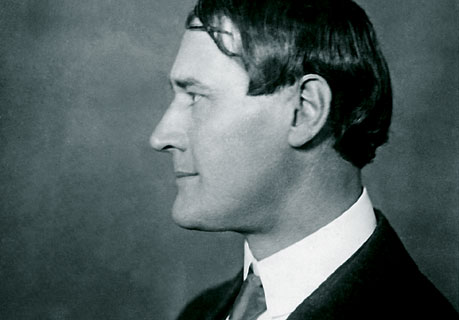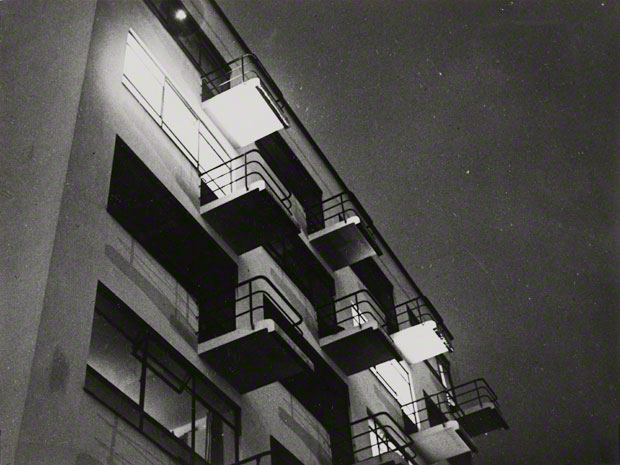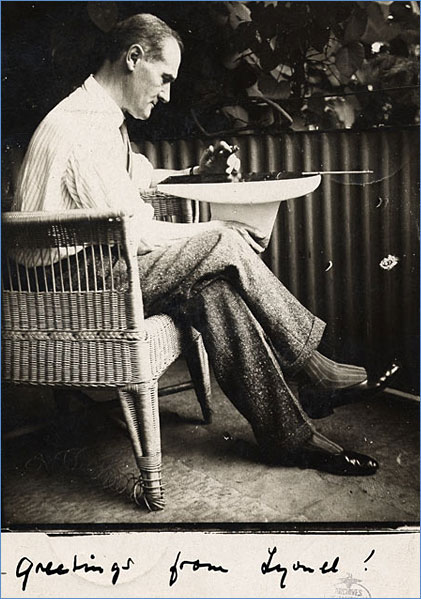lyonel feininger (1871 - 1956)
Foi ele que desenhou a capa do manifesto da Bauhaus de 1919. Começou a trabalhar como artista aos 36 anos, em seguida trabalhou como caricaturista comercial para vários jornais nos EUA. Além de pintor, foi músico, fotógrafo, caricaturista e ilustrador.
Foi membro da Berliner Sezession em 1909, esteve associado aos grupos Die Brücke, Novembergruppe, e Gruppe 1919.
 |
O pintor germano-americano Lyonel Feininger Charles Adrian, mais conhecido por Feininger, nasceu em Nova Iorque, em 1871.
Na sua juventude viajou até à Alemanha no intuito de aí frequentar um curso de Música. Embora nunca tivesse abandonado a sua vocação pela Música, acabou por se dedicar mais às Artes Visuais. Residiu na Alemanha, na Bélgica e em Paris.
Os seus primeiros passos na ilustração foram dificeis, até que, em 1906, o jornal Chicago Sunday Tribune o contrata para contribuir com histórias aos quadradinhos: Kin-der-Kids e Wee Willis Winkies World (1906), nas quais estreia um uso não-naturalista da cor.
Depois de conhecer o Cubismo, a sua posiçao estética virou-se para a pintura expressionista que se fazia na Alemanha. Participou na exposição do grupo Der Blaue Reiter, no primeiro salão organizado em Berlim.
Ensinou na Bauhaus por diversos anos, começando em 1919, na chamada fase espressionista.
Proibido pelos nazis e considerado por eles "artista degenerado", em 1937 voltou ao seu país de origem, os Estados Unidos.
 |
| Bauhaus, Lyonel Feininger, 1929. © Artists Rights Society (ARS), New York / VG Bild-Kunst, Bonn |
Links externos
whitney.org/Exhibitions/LyonelFeininger
Bibliografia
Haskell, Barbara. Lyonel Feininger: At The Edge of the World. Exhibition Catalogue. New York: Whitney Museum of American Art, 2011
Blackbeard, Bill. The Comic Strip Art of Lyonel Feininger. Kitchen Sink Press. 1994.
————————
 |
| Photograph of Lyonel Feininger, 1926. Image from the Smithsonian Archives of American Art |
Feininger studied drawing at the vocational school in Hamburg in 1887. One year later, he was accepted at the Königliche Akademie der Künste in Berlin where he attended painting classes taught by Ernst Hancke. In 1891, he continued his studies at a private art school. Between 1892 and 1909, he travelled extensively to Paris, Rome, London and elsewhere.
At the same he published caricatures in various magazines such as "Narrenschiff" and "Lustige Blätter". In addition, he was represented at exhibitions such as the "Große Berliner Kunstausstellung" (great Berlin art exhibition) of 1904, and in 1909, he became a member of the Berlin Secession. In 1907, Feininger turned to painting and exhibited at the Salon des Artistes Indépendants in Paris in 1911.
He was invited by Franz Marc to exhibit some of his works for the first time at the Erster Deutscher Herbstsalon (first German autumn salon) at Herwarth Walden’s gallery Der Sturm in 1913. In 1919, he became a member of the work council for art and pursued Walter Gropius to Weimar.
Walter Gropius appointed him as one of the first masters at the Staatliches Bauhaus in Weimar in May 1919, where he served as master of form in the printing workshop from 1919 to 1925. His woodcut Cathedral was used to illustrate the cover of the Bauhaus Manifesto of 1919. In 1921, a folder with 12 woodcuts by Feininger was the first publication to be printed at the Bauhaus Weimar. In 1924, he joined with Alexej Jawlensky, Paul Klee and Wassily Kandinsky to form the exhibition collective "Die Blauen Vier" (The Blue Four).
During his Bauhaus period, works by Lyonel Feininger, father of Bauhaus students Andreas and Theodore Lux Feininger, were shown in many exhibitions, for instance at the Kronprinzenpalais (Crown Prince palace) in Berlin in 1928 and in the Museum of Modern Art in New York in 1929. In 1937, Feininger emigrated to the USA and taught at Mills College in Oakland, California, and at Black Mountain College in North Carolina. Many exhibitions of his work took place in the USA, such as the retrospective at the Museum of Modern Art New York in 1944.

Quer usar este texto em qualquer trabalho jornalístico, universitário ou científico? Escreva um email a Paulo Heitlinger.